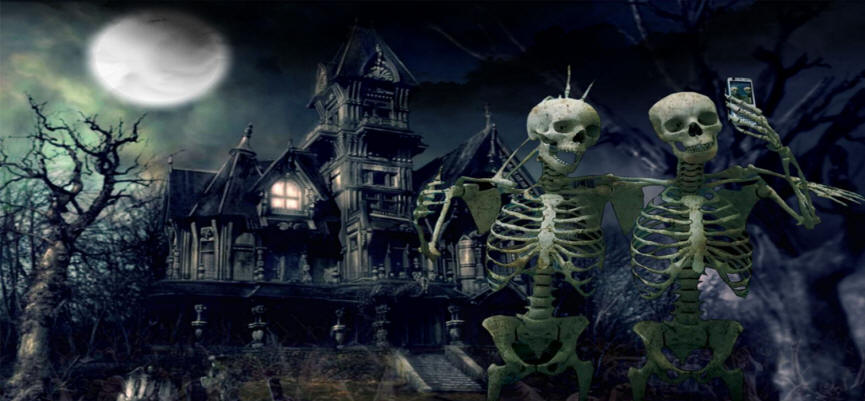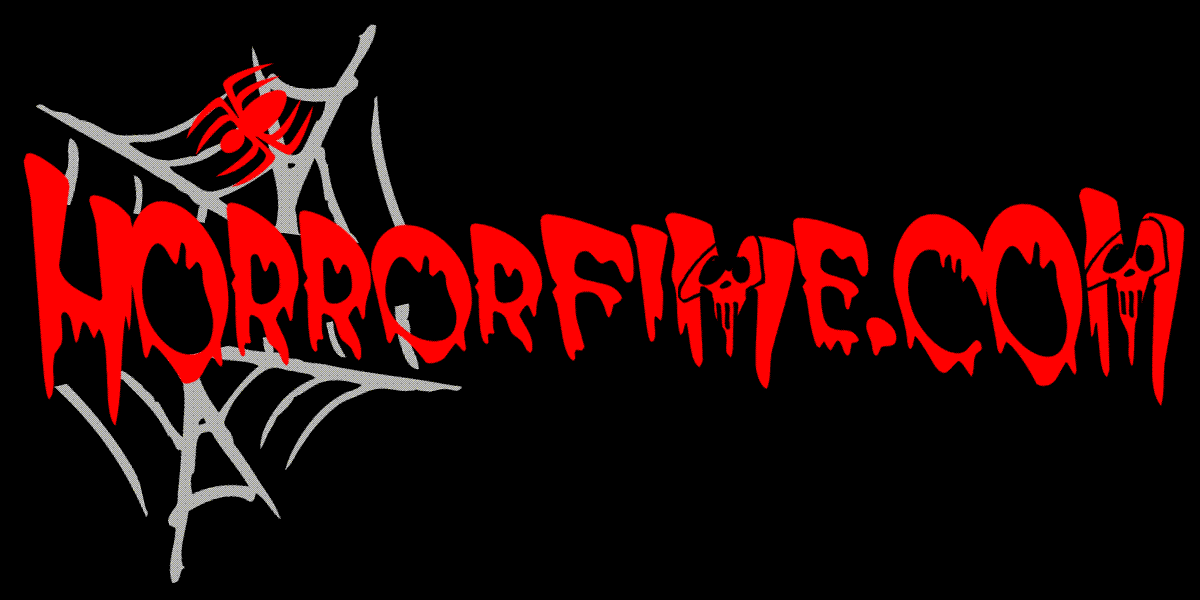
History Of Haloween
Halloween
Evolving from the ancient Celtic holiday of Samhain, modern
Halloween has become less about literal ghosts and ghouls and
more about costumes and candy. The Celts used the day to mark
the end of the harvest season and the beginning of winter, and
also believed that this transition between the seasons was a
bridge to the world of the dead. Over the millennia the holiday
transitioned from a somber pagan ritual to a day of merriment,
costumes, parades and sweet treats for children and adults. For
more about the history of Halloween Click Here -->

|

History of the Jack O’ Lantern
Every October, carved pumpkins peer out from porches and
doorsteps in the United States and other parts of the
world.Gourd-like orange fruits inscribed with ghoulish faces and
illuminated by candles are a sure sign of the Halloween season.
The practice of decorating “jack-o’-lanterns”—the name comes
from an Irish folktale about a man named Stingy Jack—originated
in Ireland, where large turnips and potatoes served as an early
canvas. Irish immigrants brought the tradition to America, home
of the pumpkin, and it became an integral part of Halloween
festivities. For more about the
history of the Jack O’ Lantern
Click Here -->


|
   
 
 
 
   
 
|
Halloween Saftey Tips
BEFORE HALLOWEEN:
•Plan costumes that are bright and reflective. Make sure that
shoes fit well and that costumes are short enough to prevent
tripping, entanglement or contact with flame.
•Consider adding reflective tape or striping to costumes and
trick-or-treat bags for greater visibility.
•Secure emergency identification (name, address, phone number)
discreetly within Halloween attire or on a bracelet.
•Because a mask can limit or block eyesight, consider non-toxic
and hypoallergenic makeup or a decorative hat as a safe
alternative.
•When shopping for costumes, wigs and accessories, purchase only
those with a label indicating they are flame resistant.
•Think twice before using simulated knives, guns or swords. If
such props must be used, be certain they do not appear authentic
and are soft and flexible to prevent injury.
•Obtain flashlights with fresh batteries for all children and
their escorts.
•Plan ahead to use only battery powered lanterns or chemical
lightsticks in place of candles in decorations and costumes.
•This is also a great time to buy fresh batteries for your home
Smoke Alarms.
•Teach children their home phone number and to how call 9-1-1
(or their local emergency number) if they have an emergency or
become lost. Remind them that 9-1-1 can be dialed free from any
phone.
•Review with your children the principle of "Stop-Drop-Roll",
should their clothes catch on fire.
•Openly discuss appropriate and inappropriate behavior at
Halloween time.
•Consider purchasing individually packaged healthy food
alternatives (or safe non-food treats) for those who visit your
home.
•Take extra effort to eliminate tripping hazards on your porch
and walkway. Check around your property for flower pots, low
tree limbs, support wires or garden hoses that may prove
hazardous to young children rushing from house to house.
• Learn or review CPR skills to aid someone who is choking or
having a heart attack.
•Consider safe party guidelines when hosting an Adult or Office
Party.
Think of unique ways you can safely share the fun in your
neighborhood!
FUN ALTERNATIVES:
•Find a special event or start one in your own neighborhood.
•Community Centers, Shopping Malls and Houses of Worship may
have organized festivities.
•Share the fun by arranging a visit to a Retirement Home or
Senior Center.
•Create an alliance with College Fraternities, Sororities or
Service Clubs for children's face painting or a carnival.
Make sure your home is safe for trick-or-treaters to visit!
BEFORE NIGHTFALL ON HALLOWEEN:
•A good meal prior to parties and trick-or-treating will
discourage youngsters from filling up on Halloween treats.
•Consider fire safety when decorating. Do not overload
electrical outlets with holiday lighting or special effects, and
do not block exit doors.
•While children can help with the fun of designing a Jack O'
Lantern, leave the carving to adults.
•Always keep Jack O' Lanterns and hot electric lamps far away
from drapes, decorations, flammable materials or areas where
children and pets will be standing or walking.
•Plan and review with your children the route and behavior which
is acceptable to you.
•Do not permit children to bicycle, roller-blade or skateboard.
•Agree on a specific time when revelers must return home.
•Along with flashlights for all, older children and escorts
should wear a wristwatch and carry coins for non-emergency phone
calls.
•Confine, segregate or otherwise prepare household pets for an
evening of frightful sights and sounds. Be sure that all dogs
and cats are wearing collars and proper identification tags.
Consult your veterinarian for further advice.
•Remind all household drivers to remain cautious and drive
slowly throughout the community.
•Adult partygoers should establish and reward a designated
driver.
Make Halloween a fun time for everyone by emphasizing safety!
WHEN TRICK-OR-TREATING:
•A Parent or responsible Adult should always accompany young
children on their neighborhood rounds.
•Remind Trick-or-Treaters: ?By using a flashlight, they can see
and be seen by others.
?Stay in a group, walk slowly and communicate where you are
going.
?Only trick-or-treat in well known neighborhoods at homes that
have a porch light on.
?Remain on well-lit streets and always use the sidewalk.
?If no sidewalk is available, walk at the farthest edge of the
roadway facing traffic.
?Never cut across yards or use alleys.
?Never enter a stranger's home or car for a treat.
?Obey all traffic and pedestrian regulations.
?Always walk. Never run across a street.
?Only cross the street as a group in established crosswalks (as
recognized by local custom).
?Remove any mask or item that will limit eyesight before
crossing a street, driveway or alley.
?Don't assume the right of way. Motorists may have trouble
seeing Trick-or-Treaters. Just because one car stops, doesn't
mean others will.
?Never consume unwrapped food items or open beverages that may
be offered.
?No treats are to be eaten until they are thoroughly checked by
an Adult at home.
?Law Enforcement authorities should be notified immediately of
any suspicious or unlawful activity.
Both the young and young-at-heart need to openly discuss safety
during Halloween
AFTER TRICK-OR-TREATING:
•Wait until children are home to sort and check treats. Though
tampering is rare, a responsible Adult should closely examine
all treats and throw away any spoiled, unwrapped or suspicious
items.
•Try to apportion treats for the days following Halloween.
•Although sharing is encouraged, make sure items that can cause
choking (such as hard candies), are given only to those of an
appropriate age.
Those wishing to reproduce or distribute this copyright
protected information, shall do so under strict license by
crediting the Los Angeles Fire Department
We Here At HorrorFiMe.com wish you a safe and happy Halloween! |
|
|
Disclaimer: The publication of any and all content e.g., articles,
reports, editorials, commentary, opinions, as well as graphics and or
images on this web-site does not constitute sanction or acquiescence of
said content; it is solely for informational purposes. Fair Use Notice
This site www.HorrorFiMe.com may contain copyrighted material the use of
which may not be specifically authorized by the copyright owner. We are
making such material available in our efforts to advance understanding
of environmental, political, human rights, economic, democratic,
scientific, social justice, and religious issues, etc. We believe this
constitutes a 'fair use' of any such copyrighted material as provided
for in section 107 of the US Copyright Law. In accordance with Title 17
U.S.C. Section 107, the material on this site is distributed without
profit to those who have expressed a prior interest in receiving the
included information for research and educational purposes. |
